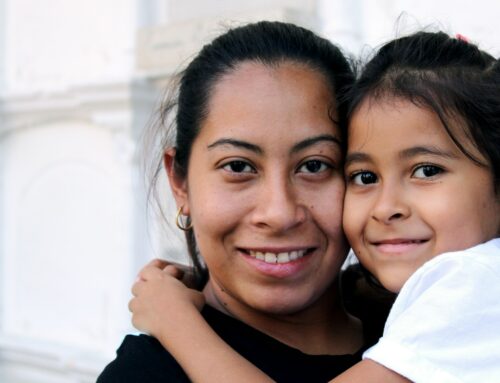Intro:
Moving to a new country can be an exciting adventure, filled with the promise of new experiences, opportunities, and cultural immersion. However, it also comes with its fair share of challenges and adjustments, particularly when it comes to adapting to a new educational system. For students and parents embarking on this transformative journey, one of the primary concerns that often looms large is the question of how school grades work in their new environment.
This concern is especially pertinent for those relocating between Canada and France, two countries known for their world-class education systems. Yet, despite their reputation for educational excellence, French and Canadian schools each employ distinct marking systems that can be bewildering to newcomers. The transition from one grading system to another can feel like decoding a complex puzzle.
In this comprehensive guide, we’ll embark on a journey to demystify this puzzle by delving deep into the intricacies of both the French and Canadian grading systems. We will explore their unique features, understand the fundamental differences, and offer practical insights on how to effectively translate grades between these two countries. Whether you’re a student embarking on a cross-border academic adventure or a parent seeking to support your child’s educational journey, this guide is your roadmap to clarity and understanding in the realm of disparate grading systems.
Understanding the Canadian Grading System
The Canadian grading system is characterized by its use of letter grades, each associated with an equivalent grade point average (GPA) on a 4.0 scale. To begin our exploration, let’s take a closer look at the Canadian grading scale:
A+ (90-100%): Excellent
A (85-89%): Very Good
A- (80-84%): Very Good
B+ (77-79%): Good
B (73-76%): Good
B- (70-72%): Good
C+ (67-69%): Satisfactory
C (63-66%): Satisfactory
C- (60-62%): Satisfactory
D (50-59%): Pass
F (0-49%): Fail
It’s important to note that grading practices can vary between provinces and territories in Canada, so students may encounter slight variations in the grading scale and criteria depending on their location and educational institution.
Understanding the French Grading System
In contrast to the Canadian grading system, the French grading system relies on numerical scores, a feature that distinguishes it from many other countries. Here’s an overview of the French grading scale:
20/20: Excellent
19/20 – 16/20: Très bien (Very Good)
15/20 – 14/20: Bien (Good)
13/20 – 10/20: Assez bien (Satisfactory)
9/20 – 6/20: Passable (Pass)
5/20 and below: Fail
Translating Grades: A Complex Endeavor
Translating grades between the Canadian and French grading systems is not a straightforward process due to the significant differences in scale and criteria. While it’s impossible to create a precise one-to-one translation, we can provide some general guidelines to help you make rough comparisons:
A+ to A- in Canada can roughly correspond to 16/20 to 20/20 in France, indicating excellent performance.
B+ to B- in Canada might equate to 13/20 to 15/20 in France, representing good to very good performance.
C+ to C- in Canada may align with 10/20 to 12/20 in France, indicating satisfactory performance.
D in Canada, signifying a passing grade, can be compared to the lower end of passable (6/20 to 9/20) in France.
F in Canada, representing a fail, is below the passing threshold in the French system (5/20 and below).
It’s crucial to remember that these translations are approximate, and the specific equivalencies can vary depending on the institution and the assessment methods used. When translating grades, it’s advisable to consult with the educational institution or seek guidance from academic advisors who are well-versed in both systems.
Navigating Higher Education in French and Canadian Schools
Translating grades becomes particularly critical when students are looking to pursue higher education in their new country. Canadian universities, for example, may have specific requirements for international students, including grade conversion guidelines. Similarly, French universities may have their own evaluation methods for international applicants.
For students aiming to attend Canadian schools or universities with grades from the French system, it’s crucial to provide a comprehensive academic record that includes detailed course descriptions, syllabi, and any standardized test scores like the Baccalauréat. This documentation can assist admissions committees in understanding the rigor of your coursework and making more accurate assessments.
Seeking Guidance from Educational Experts
One of the most effective ways to navigate the complexities of translating grades between the Canadian and French grading systems is to seek guidance from educational experts. Academic advisors at educational institutions, international student offices, and even private educational consultants can provide invaluable insights and assistance.
These experts are familiar with the intricacies of both grading systems and can help students and parents understand the nuances of grade translation, ensuring a smoother transition into the local education system.
Language Proficiency Considerations for French and Canadian Schools
In addition to understanding grade translation, students moving between Canada and France should also consider language proficiency requirements. If you’re studying in a new country with a different primary language, you may be required to demonstrate proficiency in that language through standardized tests like the TOEFL or IELTS for English or the DELF/DALF for French.
Language proficiency requirements can vary by institution and program, so it’s essential to research the specific requirements of the institutions you are interested in and plan accordingly.
Conclusion
Translating school grades between the Canadian and French grading systems can be a complex and challenging endeavor, but it’s a crucial step for students and parents navigating the transition between these two countries. While there are general guidelines for translating grades, it’s essential to remember that these equivalencies are not absolute and can vary depending on various factors, including individual school policies and the level of education for both French and Canadian schools.
To navigate this process successfully, students and parents should seek guidance from educational experts, such as academic advisors and international student offices, who can provide personalized support and insights. With the right information and support, students can thrive in their new educational environments, whether in Canada or France, and embark on a rewarding educational journey filled with new experiences and opportunities. Adaptability, preparation, and a willingness to learn are key to a successful transition and academic success in a new country.







Leave A Comment